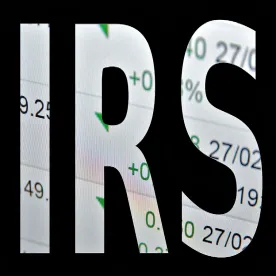On May 27, 2020, the IRS released Notice 2020-41 (the Notice) providing relief to taxpayers seeking the production tax credit (PTC) or the investment tax credit (ITC) and encountering industry-wide construction and supply delays caused by COVID-19. Since the earliest days of the pandemic, supply chain disruption, work stoppages, and other delays have created uncertainty as to when developers would be deemed to begin construction on renewable energy projects, casting doubt as to whether, and to what extent, such projects would be eligible for PTCs or ITCs. The Notice provides relief in two bright-line modifications to existing rules. First, the Notice extends the Continuity Safe Harbor (as defined below) from four years to five years for projects that began construction in 2016 or 2017; this extension formalizes the Department of the Treasury’s statement of intent in its letter to a consortium of concerned Senators on May 7, 2020. Second, the Notice adds a safe harbor for taxpayers relying on the 3.5 Month Rule (as defined below) for purposes of the Five Percent Safe Harbor. If a taxpayer pays for services or property on or after September 16, 2019, the taxpayer will be deemed to have had a reasonable expectation of receipt within three-and-a-half months if performance or delivery actually occurs on or before October 15, 2020.
Background
The calendar year when a taxpayer begins construction on a particular renewable energy project generally establishes the amount of PTCs or ITCs for which such project is eligible. The amount of available PTCs and ITCs declines over time. Accordingly, the year when construction of a project begins is critical for determining the amount of available credits. For example, a taxpayer generally may claim solar ITCs at the highest specified percentage (30% of the tax basis of the project’s energy property) if construction on the project is deemed to begin in 2019. By contrast, if construction were deemed to begin in 2020, the taxpayer would be eligible to receive ITCs at a lower specified percentage (26% of the tax basis of the project’s energy property).
3.5 Month Rule Relief
A taxpayer may establish that construction has begun on a qualified facility or energy property by demonstrating that physical work of a significant nature has occurred (the Physical Work Test) or, under a safe harbor, by demonstrating that five percent or more of the total cost of such facility or property has been incurred (the Five Percent Safe Harbor), in each case, during a particular year. The taxpayer may treat costs for services or property as incurred when paid, and therefore counted for purposes of the Five Percent Safe Harbor, if the taxpayer reasonably expects to receive the services or property within three-and-a-half months of the date of payment (the 3.5 Month Rule). The 3.5 Month Rule applies regardless of whether performance or delivery actually occurs within such period. Recently, COVID-19-related product and service delays have caused concern as to whether expectations of performance or delivery within three-and-a-half months would be respected as reasonable at the time of payment.
The Notice mitigates such concerns. The Notice provides that, if a taxpayer pays for services or property on or after September 16, 2019, the taxpayer will be deemed to have had a reasonable expectation that the services or property would be received within three-and-a-half months as long as the taxpayer actually receives the services or property on or before October 15, 2020. For example, assume a developer sought to claim a 30% ITC for a solar facility by satisfying the Five Percent Safe Harbor in 2019, in part, by paying for property on December 1, 2019, with delivery expected in early 2020. The developer, however, does not receive the materials within three-and-a-half months of December 1, 2019, on account of supply chain disruptions caused by COVID-19. Prior to the Notice, the developer might worry that its expectation that the property would be received within three-and-a-half months would not be respected as reasonable, which could hinder the developer’s ability to treat the costs as incurred in 2019. With application of the Notice, however, the developer would be able to treat the costs as incurred on December 1, 2019, with certainty, provided that the property actually is received on or before October 15, 2020.
If a taxpayer pays for services or property on or after September 16, 2019, but they are not performed or delivered until after October 15, 2020, the taxpayer still may treat the related costs as incurred on the date of payment if the taxpayer is able to satisfy the reasonable expectation standard under the 3.5 Month Rule.
Continuity Requirement Relief
To satisfy the Physical Work Test, once physical work of a significant nature has begun, construction must be continuous until the project is completed; similarly, to satisfy the Five Percent Safe Harbor, continuous efforts, rather than continuous construction, are required (the Continuity Requirement). A taxpayer is considered to satisfy the Continuity Requirement for the Physical Work Test or the Five Percent Safe Harbor if the project is placed in service by the end of a calendar year that is no more than four calendar years after the calendar year when construction began (the Continuity Safe Harbor). By contrast, if the taxpayer fails to satisfy the Continuity Safe Harbor, whether the taxpayer satisfies the Continuity Requirement will be based on the relevant facts and circumstances. Developers that began construction on renewable energy projects in 2016 under the Physical Work Test or the Five Percent Safe Harbor have been concerned that COVID-19-related disruptions could prevent them from placing projects in service in 2020, which, prior to the Notice, would cause a project to fall outside of the Continuity Safe Harbor. This has been particularly worrisome for developers of onshore wind projects, many of whom have sought to claim the PTC, or ITC in lieu of PTC, at the highest specified percentage by beginning construction in 2016.
The Notice also has addressed this concern. The Notice provides that, for any qualified facility or energy property for which construction began under the Physical Work Test or the Five Percent Safe Harbor in 2016 or 2017, the Continuity Safe Harbor will be satisfied if the taxpayer places the project in service by the end of a calendar year that is no more than five calendar years after the calendar year during which construction began. As a result of this extension, a developer facing construction, supply, or other delays for a project begun in 2016 or 2017 will have the benefit of an extra year to place the project in service for purposes of qualifying for the Continuity Safe Harbor, and therefore would not be required to satisfy the Continuity Requirement under the facts-and-circumstances standard.
Scope of the Notice and No Ruling Policy
The modifications to the 3.5 Month Rule and the Continuity Safe Harbor do not require the taxpayer to show that a particular renewable energy project has been harmed or delayed by the COVID-19 pandemic in order to qualify for relief.
In addition, the Notice provides that the IRS will not issue private letter rulings or determination letters to taxpayers regarding the application of the Notice, prior related notices, or the beginning-of-construction requirement.




 />i
/>i
